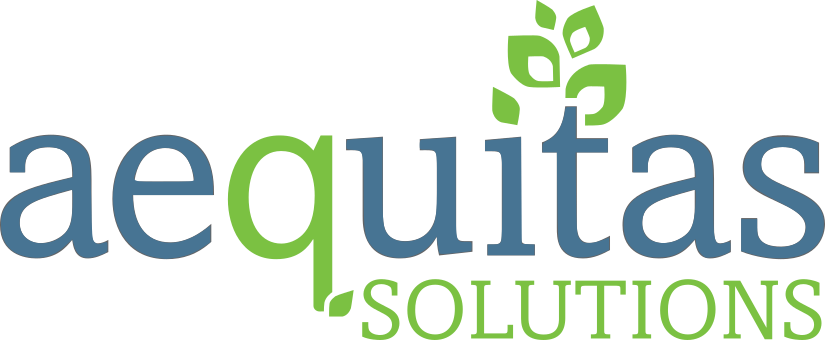For California school districts, the countdown to CALPADS End-of-Year (EOY) reporting begins long before the final deadline. With multiple submissions, numerous data elements, and validation rules, the process can feel overwhelming, especially when deadlines collide with graduation, summer planning, and staff turnover.
But it doesn’t have to be this way. By approaching EOY reporting with a proactive plan, districts can reduce last-minute stress, avoid costly errors, and make data submission a manageable part of their year-end routine. This guide outlines actionable steps district teams can take in advance to ensure EOY submissions are smooth, accurate, and on time.
Why Early Action Matters for CALPADS EOY
CALPADS EOY reports are more than a compliance requirement—they affect funding, accountability, and visibility into student success. Delayed or inaccurate submissions can cause ripple effects across departments and campuses.
Many districts scramble to fix errors just days before the final certification. That’s avoidable by starting early. Getting a head start gives your team time to:
- Validate key data before it is due for submission
- Collaborate across departments
- Prevent duplicate efforts
- Reduce audit risk
With the right tools and timeline, districts can treat EOY as a routine data milestone, not an emergency.
Action Step 1: Map Out Key Reporting Elements by Role
One of the biggest challenges with CALPADS EOY is that no single person owns all the data. Special programs, attendance, behavior, and course completion all feed into different submissions. Critical elements can fall through the cracks without a clear delineation of responsibilities.
What to do now:
- Identify the data owners for each submission type (EOY 1–4).
- Create a shared timeline outlining when each team should collect, review, clean, and submit their data.
- Hold cross-department check-ins to resolve gaps and prevent last-minute surprises.
Example: If your district has a high volume of suspensions, ensure your behavior data lead is regularly reviewing discipline records well before June. Similarly, if foster or homeless status updates are missing, the student services team should start verifying those in April.
Tip: Create a shared project plan or checklist that updates in real-time as tasks are completed. This visibility keeps everyone informed, encourages accountability, and helps identify bottlenecks early, especially when multiple departments contribute to the same submission.
Action Step 2: Monitor and Validate Data Regularly
Data quality isn’t something that happens the week before certification. By validating data regularly (monthly or biweekly), districts can reduce the number of errors flagged during the final submission window.
What to do now:
- Start running CALPADS validation reports now, even if you’re not ready to submit them.
- Review common error codes for EOY submissions and flag recurring issues.
- Compare year-to-date trends to prior years. Are your suspension rates suddenly low? Are course enrollments incomplete?
Example: If EOY 3 (discipline data) shows fewer incidents than in prior years, it could be a sign of incomplete records, not a sudden improvement. Running validation checks now helps you investigate and fix issues before staff leave for summer.
Tip: Encourage site staff to close out behavior and attendance incidents weekly so they don’t build up over time.
Action Step 3: Reconcile Program Participation Early
Programs like Special Education, English Learner (EL), Foster, Homeless, and Free/Reduced Meal eligibility feed directly into CALPADS EOY files. However, program data often comes from multiple systems or outside agencies, making reconciliation a key part of successful reporting.
What to do now:
- Pull program participation reports from your SIS and verify against internal or county rosters.
- Confirm start/end dates and eligibility codes are accurate.
- Work with liaisons and program coordinators to resolve mismatches before the end of the school year.
Example: If a student is flagged as homeless in your SIS but their status is not reflected in your CALPADS extract, they may be missing support services or affecting counts. Cross-checking data early ensures that eligible students are reported accurately and that your district receives the funding and recognition it deserves.
Tip: Use a student-level audit report to verify that each student’s records are aligned across all programs. Systems with integrated reporting can simplify this process significantly.
Bonus: Prepare for Staff Turnover
The end of the year often brings staffing changes. If the person handling CALPADS leaves or changes roles, knowledge gaps can create delays or errors. Without documented procedures and backup resources, even routine tasks can become major roadblocks during the reporting window.
What to do now:
- Document your EOY reporting process, including file locations, validation steps, and contacts.
- Create a “handoff” guide for new or temporary staff.
- Ensure permissions and SIS access are updated before summer starts.
Tip: Pair primary CALPADs team members with backup staff. Documentation and resource redundancy can save on stress and help your district avoid chaos in the event a staff member leaves or is not available when submissions are being prepared.
Suggested EOY Milestones
After assigning roles, cleaning data, and preparing for handoffs, the final step is aligning your work to a timeline. The following milestone dates reflect best practices for EOY reporting and ensure your action steps stay on track.
- April – May 6 Complete Data Population in SIS: Focus on entering and verifying required fields in your SIS, including enrollment, behavior, program eligibility, and course data.
- April – June 19 Submit and Post Files, Review Errors: Begin submitting test files to CALPADS and checking IVR and Data Discrepancy reports. Start resolving issues early.
- June 20 – July 10 Resolve Errors and Updated Records: Use this period to finalize updates, run snapshot reports, and fix any lingering data issues.
- July 11 Recommended Date for Zero Errors: Aim to have all certification and discrepancy errors cleared by this date to allow time for final approvals.
- July 11 – July 18 Distribute Reports for Review and Approval: Share final reports with site leaders and administrators for review. This step ensures leadership is aligned before official certification.
- July 22 – July 25 LEA Certification and SELPA Approval: Certify EOY 1–4 submissions. For EOY 3 and 4, ensure SELPA approval is secured, if applicable.
- July 26 – August 8 Amendment Window: Submit final corrections during the amendment window. Remember: EOY 3 and 4 amendments still require SELPA approval.
Set Your District Up for CALPADS Success
CALPADS End-of-Year reporting can be an opportunity to strengthen your district’s data culture, support student programs, and ensure accurate reporting that reflects the full scope of your services.
Districts that treat EOY submissions as a strategic process are more likely to meet deadlines with fewer errors, retain funding, and reduce staff burnout during an already busy time of year. Here are some tips to strengthen your district’s overall CALPADS approach and culture.
Shift from Deadline-Driven to Milestone-Oriented
Work backward from the final certification date to build a timeline of pre-submission milestones that help your team stay ahead of CALPADS requirements. As outlined in the suggested EOY milestones, breaking the process into manageable phases allows for earlier review, collaboration, and corrections so that your data is already clean and certified by the time the submission window closes.
Build Cross-Department Ownership
Data quality improves when the right people are involved at the right time. EOY reporting touches nearly every department, from attendance clerks to program coordinators to IT. Establishing shared responsibility ensures nothing gets overlooked and builds district-wide confidence in the accuracy of your submissions.
Prepare Your Systems and Staff
Staff turnover, incomplete documentation, or unclear processes can derail even the most prepared team. Make time to document internal workflows, ensure current SIS permissions, and train new staff on CALPADS procedures early. A little preparation now can prevent hours of stress later.
Use Tools That Work With You
Manual processes, disconnected systems, and static spreadsheets make state reporting harder than it needs to be. Districts benefit from a Student Information System that supports CALPADS logic, flags errors in real-time and provides up-to-date reporting tools aligned with CDE guidelines.
Simplify CALPADS Reporting with the Right SIS
Your SIS should be more than a place to store data, it should actively support your district’s efforts to stay compliant and accountable. That’s why we’ve built CALPADS-specific functionality directly into our SIS, Q, designed to help your district confidently manage state reporting requirements throughout the year.
Whether you’re gearing up for End-of-Year submissions or handling data entry and reporting on a rolling basis, Q SIS provides the tools you need to ensure CALPADS compliance is accurate, efficient, and less stressful.
Book a demo or learn more about Q SIS to see how we can support your district through every reporting cycle.


